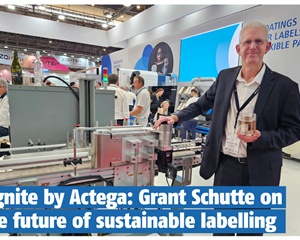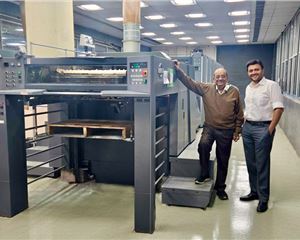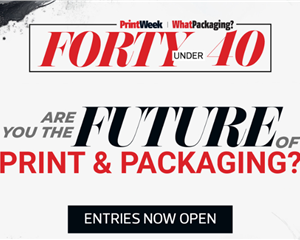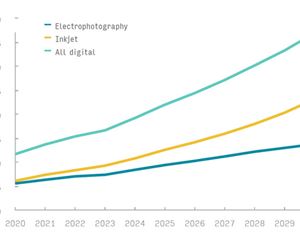GEW presents AeroLED2, LeoLED2 and DoseGuard
GEW introduced new air- and water-cooled LED curing systems along with a dose-control and QC tool, while confirming an easy retrofit path for existing converters.
20 Sep 2025 | By Noel D'Cunha
GEW has expanded its LED curing line-up at Labelexpo Europe 2025, outlining an air-cooled system for narrow web, a higher-power water-cooled range for wide web, and a new dose-control and QC tool. The update also confirms a straightforward retrofit path for converters already on GEW power supplies.
GEW’s AeroLED2 is introduced as a fully air-cooled LED system for narrow web up to 70 centimetres, equivalent to 26 inches. Power has been boosted by 30% or more versus the previous version, with electrical power at 70 W/cm and peak irradiance at 26 W/cm².
Robert Rae, managing director for sales, said the new air-cooled unit matches the output of the earlier water-cooled design and remains compatible with the ArcLED architecture that lets users swap between mercury and LED cassettes on the same power supply. All GEW presses shipped with Rhino power supplies since 2015 are LED-ready.
Rae described the retrofit as a short intervention: customers buy the LED cassette, run a software update and can produce in about an hour. He added that LED brings longer life, lower operating temperature and no ozone, and can reduce power consumption by about 50-70%, depending on the application.
For higher powers and wider formats, GEW is fielding LeoLED2 as its second-generation water-cooled platform. Rae said LeoLED2 delivers about 25% more power than AeroLED2, with another variant available at nearly twice AeroLED2’s power. Arrays can be built up to 2.5-metres wide for sheetfed offset, coaters, corrugated and both stack and CI flexo lines.
Production of the new LED models began in January–February. Over the last 12 months GEW has manufactured approximately 3,000-LED lamps. While precise country counts sit with the local team, Rae said there are “loads” running in India already and he expects a few hundred LED units to be installed there, supported by ArcLED’s ability to swap back to mercury cassettes for specific jobs if required.
Alongside the lamps, GEW is introducing DoseGuard, a sensor system that scans across the lamp footprint to measure delivered UV and maintain a target dose in a closed loop as lamps and reflectors age.
Rae positioned it for applications such as hot-melt adhesives and high-control pharma or food-contact work. “The same sensing technology is offered as a bench unit for quality departments: operators slide in any GEW cassette and verify output, with support for LED, mercury and legacy products. Inline use is possible, though standard label work will typically use the stand-alone bench tool.”
Rae said the intent is to lower the risk of transition while tightening process control. ArcLED allows a swap between mercury and LED with a single Allen key, and long-running Rhino power installations mean many presses can move to LED with minimal disruption. “The combination of air-cooled AeroLED2 for narrow web, high-power water-cooled LeoLED2 for wide web, and DoseGuard for verification is aimed at giving converters energy savings, stable curing and a measured route away from mercury,” Rae concluded.












 See All
See All